Matador Network's Blog, page 83
December 27, 2024
This Budget Airline Just Made It Easier (and Cheaper) to Fly Across the Atlantic

Flying across the Atlantic Ocean is not an easy task for airlines. The jet fuel required for long-haul flights is not cheap – fueling a trans-Atlantic flight costs at least $27,000, and can cost over $100,000. Long-hauls require more staff than short-hauls, necessitate serving multiple meals, and must be flown on larger planes. All of these costs add up to a sum that budget airlines are often not able to swallow. As such, few of them boast overseas routes that last. One exception is Norse Atlantic, a Norwegian-based budget airline that specializes in doing just that. Finding good deals on the airline’s flights will be easier than ever in 2025, thanks to Norse finally listing its flights on SkyScanner and other third-party online travel agencies.
Just so you know, Matador may collect a small commission from the links on this page.
Norse Atlantic lists flights on SkyScanner and other OTAs to make European travel easier
Photo: Koshiro K/Shutterstock
Prior to the airline’s decision to add its flights to SkyScanner, flyers could still find trans-Atlantic deals from the airline – but they had to visit the Norse website in order to do so. That all changed in December when Norse added its flights into the back-end booking system Sabre, which provides data to OTAs so that they can list flights for customers to purchase.
While Norse doesn’t fly to many US cities, it does hit New York JFK, Miami, Las Vegas and Orlando. From there, travelers must transfer to another airline if they need to connect to other domestic destinations. On the European side, travelers departing from the US can fly to Berlin, London Gatwick, Rome, Paris, and Oslo.
If you plan to travel to Europe in 2025, your best bet for finding the cheapest fares is to search SkyScanner for Norse Atlantic flights as part of your research. Using SkyScanner allows you to compare prices across different airlines and routes, and now that more budget trans-Atlantic flights are listed, it’s easier than ever to get the best fare. 
9 Small Towns in Europe Worth Visiting For the Food Alone in 2025

There are many reasons to visit Europe. For food lovers, the history, culture, and art all take a backseat to the varied cuisines that shift not just from country to country, but from town to town. The biggest cities — Paris, Rome, Barcelona, the list goes on — are well known for some of the finest restaurants in the world. Yet some of the most memorable dining can be found in Europe’s small towns where the focus is on hyper local ingredients worked into traditional dishes sometimes served only in that community.
These towns don’t often make the “must travel for the food” lists or typical influencer videos. Sometimes the town hardly has enough accommodations to house the tourists that type of recognition brings. Both only add to the charm if you’re willing to make the effort to get there. And when it comes to these nine small towns the Matador Network team has fallen for after food-filled trips, the effort is always worth it.
Contributors: Debbie Gonzalez Canada, Morgane Croissant, Suzie Dundas, Katie Gavin, Nickolaus Hines
Skip to: Bud, Norway
Ujué, Spain
Taormina, Sicily
Greifswald, Germany
Gstaad, Switzerland
Le Croisic, France
Madeira, Portugal
Rothenburg, Germany
Maiori, Italy
 Photo: Katie Scott Aiton
Photo: Katie Scott Aiton Photo: Fjord Norway/Einar Engdal
Photo: Fjord Norway/Einar Engdal Photo: Katie Scott AitonWhy we love it: Locavore dining at its finestWhat to eat: Seafood and seasonal dishes
Photo: Katie Scott AitonWhy we love it: Locavore dining at its finestWhat to eat: Seafood and seasonal dishesAlong Norway’s northwest coast, you’ll find small fishing villages serving some of Scandinavia’s finest seafood. These hearty dishes use nearby produce and follow recipes passed down for generations. On a recent trip, I found myself in the tiny hamlet of Bud. Bud is 20 minutes from the Atlantic Road — one of Norway’s most impressive sights and one of the 18 Norwegian Scenic Routes. At first glance, Bud’s scattering of red- and yellow-hued tinder houses seems like any other pretty fishing port in the region. Yet the new restaurant Slipen makes Bud stand out even in a region with no shortage of great dining.
The welcoming wooden dining room and bar are owned and operated by the talented Rune Skeide, who turned what was once a nothing-to-write-about establishment into a destination restaurant. The building was once a place to offload and store fish — hence the name “Slipen,” referring to the slip boat use.
Skeide celebrates everything local, serving me venison shot on a hillside he can point to from the dining room window. With plans to go nose-to-tail with a butchery downstairs, I have no doubt the menu here will continue to impress in the future. There’s zero pretension, small portions, or unnecessary ingredients on plates here. Each element is seasonal and has a story to tell. Eating the entrée of wild halibut from Romsdalsfjord with glazed carrots, peas, and a mussel fumè felt like a warm hug. As did the kindly service that reminded me of dining at my grandmother’s home. I visited at the end of fall during torrential rain and have plans to revisit in summer, to sit outside and tuck into one of Skeide’s burgers. — Katie Gavin, lifestyle editor
Ujué, Spain
Photo: trabantos/Shutterstock
Why we love it: Historic small town with a restaurant that will bring you tears of joyWhat to eat: Bacalao a la vizcaina, cuajada, and other traditional Basque dishesI visited Ujué to see a 12th century fortified church (which is absolutely stunning), but I would go back for the food. Perhaps no surprise in Basque country. The northern autonomous region in Spain has its own culture, language, and, maybe most cherished by travelers, gastronomy. The capital of San Sebastián has one of the most Michelin star restaurants per capita in the world, while Bilbao is equally enticing for food lovers with great food at lower prices. Ujué has a small population that’s a tiny fraction of either of those towns: 171 inhabitants by the the 2017 census, and almost half of them over 60 years old. The food still impresses. After a full day of walking about, my mom and I sat at Mesón Las Torres for a meal and some rest. The panoramic view from the restaurant was breathtaking, so at first I thought it could be a tourist trap. The menu consisted of mostly traditional Basque dishes, some of which we had already tried in Pamplona and other places. I still remember her tears of joy when she tried bacalao a la vizcaina (a Basque version of salt cod stew) and it tasted just like the one her grandfather used to cook for her. Traditional desserts were a highlight too. If you are having a hard time choosing, go with the cuajada (curd) with caramelized nuts. — Debbie Gonzalez Canada, SEO Editor
Taormina, Sicily Photo: Belmond Hotels /Otto Geleng and Tyson Sadlo
Photo: Belmond Hotels /Otto Geleng and Tyson Sadlo Photo: Belmond Hotels /Tyson Sadlo and Mattia Aquila
Photo: Belmond Hotels /Tyson Sadlo and Mattia Aquila Photo: DaLiu/ShutterstockWhy we love it: Exceptional food from street carts to Michelin star restaurantsWhat to eat: Seafood and fresh produce
Photo: DaLiu/ShutterstockWhy we love it: Exceptional food from street carts to Michelin star restaurantsWhat to eat: Seafood and fresh produceSicily, the biggest island in the Mediterranean, is the birthplace of my favorite food: arancini. The island off the boot of Italy is also where I’ve made some of my most cherished food memories. It’s an island of contrasts. Volcanic soils sustain fertile farmlands that produce some of the finest fruit and vegetables in the world, while the coastline provides a bounty of seafood. You can eat cones of arancini from greasy paper on a crate on a side street in Palermo, dine on terraces overlooking vineyards, and savor eggplant parmigiana from Michelin star kitchens. And each experience is exquisite in its own way. Sicily’s culture is just as mix-matched, and that influences the dining scene.
I took my sister, a chef, to Sicily in 2022. She had a list as long as her arm of places to eat and shop. Although I’m more haphazard in my approach to choosing where to eat – some of my best dining experiences have been accidental finds — I followed her lead and ended up in the hilltop beach town of Taormina. Taormina sits on Sicily’s western coast, and it’s here where we ended our road trip and ate an unforgettable meal at Michelin starred Otto Geleng.
Otto Geleng sits 16, but thankfully, my sister had booked far in advance. It’s housed on a balcony with terracotta pots of fuchsia that lace the view of Mount Etna on the dusty pink-walled Grand Hotel Timeo. The air smelt of orange zest and sea salt, and with a glass of spumante, we began our tasting menu journey through southern Sicily. The choose-your-own-adventure menu, steered by Roberto Toro, takes you to the sea, through valleys, or the vegetable garden. I opted for seven courses inspired by the ocean, a fitting accompaniment to the view over the Bay of Naxos. Dishes such as grilled octopus with wild fennel escarole and creamy fusillone with cuttlefish and broad beans brought silence to our table. Sharing this experience with my beloved sister is a memory I hold close to my heart. And if you’re fortunate enough to visit Sicily, take a leaf out of her book and reserve a table at Otto Geleng before you arrive on the island. — Katie Gavin, lifestyle editor
Greifswald, Germany
Photo: Sina Ettmer Photography/Shutterstock
Why we love it: A small harbor city on the Baltic Sea with beautiful and colorful North German Gothic architectureWhat to eat: Fish sandwiches, beer, and German cakesTravelers tend to forget that Germany has a coastline both on the North Sea and on the Baltic Sea and that, consequently, fish-based dishes are a significant part of the country’s traditional cuisine. The small and charming city of Greifswald, home to the 800-year-old fishing village of Wiek on the Baltic sea, is worth a stop for a traditional fish sandwich. The tastiest and most affordable place to do just that is Fisch 13, a small take-away shop with a large variety of sandwiches. Order one with plum or raspberry jam for an unexpected fish feast. If you’d rather have a proper sit-down meal in a more refined atmosphere, visit Natürlich Büttners or Restaurant Tischlerei. For something sweet and traditional, make your way to Bäckerei Kässler for a slice of mohnkuchen (German poppy seed cake). Everything at this bakery is made in-house from time-honored recipes. Because one can’t visit Germany without trying out some local beer, stop by Störtebeker Braugasthaus. Located in a beautiful North German Gothic building on Greifswald’s marketplace, this restaurant serves a large variety of specialty beer, as well as some beer-based cocktails, alongside traditional German dishes like beef-based rinderroulade and the herring-based brathering süß. — Morgane Croissant, deputy editor
Gstaad, Switzerland
 An outdoor fondue pot on a summer afternoon. Photo: Suzie Dundas
An outdoor fondue pot on a summer afternoon. Photo: Suzie Dundas Visiting a cheesemaker in the hillsides around Gstaad, Switzerland. Photo: Suzie Dundas
Visiting a cheesemaker in the hillsides around Gstaad, Switzerland. Photo: Suzie Dundas Siting in a lifesized fondue pot in the Swiss Alps. Photo: Suzie Dundas
Siting in a lifesized fondue pot in the Swiss Alps. Photo: Suzie Dundas The town of Gstaad, Switzerland. Photo: Suzie Dundas
The town of Gstaad, Switzerland. Photo: Suzie Dundas The too-cute-to-be-real streets of the historic part of Gstaad. Photo: Suzie DundasWhy we love it:The Swiss alpine views of dreams, and a multitude of adventures for the cheese obsessedWhat to eat: Hobelkäse, Bergkäse, fondue, raclette, and all other cheeses
The too-cute-to-be-real streets of the historic part of Gstaad. Photo: Suzie DundasWhy we love it:The Swiss alpine views of dreams, and a multitude of adventures for the cheese obsessedWhat to eat: Hobelkäse, Bergkäse, fondue, raclette, and all other cheesesGstaad, in the Swiss Alps, is known for its gorgeous snow-covered landscapes. But among food lovers, it’s also known for its culinary landscape — especially when it comes to dishes focused on cheese. I traveled there in fall of 2024, and though I went for the hiking and wouldn’t consider myself a huge foodie, the food experiences were really what stole the show.
In Gstaad, farmers move their cows to hillside farms every summer, where they produce the town’s signature offering: Hobelkäse. The hard cheese must be made in such a specific way that there’s an entire cheese co-op dedicated to making sure its recipe remains pure and high-quality.
The co-op runs one of the coolest things I’ve ever seen while traveling: an underground cheese grotto in an old water tower. It’s been transformed by the co-op into a cheese aging facility, where the aging process for each of the thousands of wheels in the coop is overseen by a cheesemonger extraordinaire. Guests can book tours into the grotto, complete with cheese and wine tastings.
But if you’d rather stay above ground — or want to see those famous mountain views — there’s another equally fun option offered in partnership with the tourism board and cheese co-op. Visitors can order “fondue backpacks” loaded with everything needed to make fondue al fresco (including a local fondue spice that’s mouthwateringly good), then hike to one of half a dozen life-size fondue pots scattered around Gstaad’s hillsides. The kits have everything needed, so you can enjoy the town’s signature dish while admiring some of the prettiest views in Switzerland. And if you’re completely obsessed with hobelkäse – which you very well might be after a taste – you can book experiences like hikes into the hillsides to visit a Swiss cheesemaker. You’ll need to stay overnight in a Gstaad hotel, and you’ll get a tourist card, which includes the ability to book experiences such as farm visits. It also includes other perks, like free transportation and cable car rides (useful if you’d prefer to hike down, not up).
Gstaad isn’t a huge town, but considering how accessible it is from both Zurich and other popular Swiss towns like those around Lake Geneva, it’s a no-brainer when it comes to including it in a Swiss trip (and truly a must-do for the cheese-obsessed). — Suzie Dundas, commissioning editor
Le Croisic, France
Photo: margouillat photo/Shutterstock
Why we love it: A classic small Brittany harbor town with narrow cobblestone streets lined with independent shops and restaurantsWhat to eat: Crêpes, galettes, and chocolatesFor someone like me who grew up nearby, Le Croisic has always felt like the end of the world. It’s located on the very tip of a peninsula jutting into the Atlantic Ocean and is the last stop for all the trains in the area, including the TGV coming from Paris. But Le Croisic’s location doesn’t mean it’s flying under the travel radar — in May, July, and August, the town is crowded with French tourists walking along the quay, visiting the independent shops, and trying out all the Breton specialties they can get their hands on. If you visit outside of those months, you should be able to enjoy the town and its restaurants without having to flare out your elbow or make reservations. First on the list of must-try food venues while in Le Croisic is a traditional meal of either galettes (savory buckwheat crêpes) or sweet crêpes, either accompanied by a small cup of cider at Crêperie Le Bot. My personal favorite items on the menu are the Keir Breizh galette (filled with creamy cheese) and the chestnut paste crêpe. Spending time walking around Le Croisic would not be complete without two making stops: one at Maison La Goulue for delicious chocolates shaped like seashells, bird eggs, rocks, and mussels; and one at Maison Georges Larnicol for buttery kouign-amanns and salted caramel candies. Le Croisic being a fishing harbor, it’s also a good place to try out the celebrated local seafood either at the aptly named L’Océan (high-end) or at the more casual Le Lénigo on the quay in front of the seafood market. – Morgane Croissant, deputy editor
Madeira, Portugal
 Left, wine tasting in the mountains at Quinta Do Barbusano, just outside Funchal. Right, churrasco is cooked (and often served) on a spit. Photos: Suzie Dundas
Left, wine tasting in the mountains at Quinta Do Barbusano, just outside Funchal. Right, churrasco is cooked (and often served) on a spit. Photos: Suzie Dundas Funchal's food influences encompass tropical island cuisine, seafood, influences from African countries, and french and Italian influences, among others from Europe. Photo: Suzie Dundas
Funchal's food influences encompass tropical island cuisine, seafood, influences from African countries, and french and Italian influences, among others from Europe. Photo: Suzie Dundas Madeira is an outdoorsy paradise, with sports ranging from world-class mountain biking and hiking to scuba diving, hiking, cliff jumping, deep water soloing, and much more. Photo: Suzie DundasWhy we love it: Like an affordable Hawaii if you gave the islands bigger mountains, more diverse landscapes, and a European influenceWhat to eat: Madeiran wine, seafood, garlic bread, and exotic fruit
Madeira is an outdoorsy paradise, with sports ranging from world-class mountain biking and hiking to scuba diving, hiking, cliff jumping, deep water soloing, and much more. Photo: Suzie DundasWhy we love it: Like an affordable Hawaii if you gave the islands bigger mountains, more diverse landscapes, and a European influenceWhat to eat: Madeiran wine, seafood, garlic bread, and exotic fruitFunchal, the capital of the Portuguese island of Madeira, offers a vibrant and diverse food scene that appeals to both adventurous and discerning foodies. It also has an incredible food scene, as the island’s fertile volcanic soil, subtropical climate, and year-round growing conditions provide an ideal environment for agriculture. It’s hard to imagine a crop that doesn’t thrive on Madeira, and local cuisine takes advantage of year-round harvest for everything from exotic fruits like passionfruit and custard apples to vegetables, sugarcane, and herbs to create some of the freshest dishes I’ve ever tasted.
If you’re into seafood, you’ll appreciate that the ocean is inextricably intertwined with Funchal’s culinary identity. Local favorites include espada (black scabbard), often served with bananas, and grilled limpets enjoyed with garlic and butter.
The city’s food markets, such as the Mercado dos Lavradores, offer a sensory experience selling affordable fresh produce, spices, and artisan products. And the town is covered in high-end restaurants offering multi-course fine dining experiences at decidedly non-Michelin prices – see Casa Velha Restaurant, Kampo, and Marisqueira Splendida. (Though the island has plenty of Michelin-designated restaurants, too). If those restaurant names sound international, it’s because they are. Madeira has long been an important trading post in the Atlantic, and its cuisine is influenced by countries ranging from Morocco to Japan, France, and the Americas.
But Madeira is not just about the food – it’s about the wine, too. Madeira, the island, is synonymous with Madeira, the port wine. In Funchal, you need to try Madeirian wine at Blandy’s, then head just outside the city to one of the island’s many hillside wineries. (I recommend taking a wine tour, rather than driving yourself.)
On top of all that, Madeira has some of the best mountain biking, cliffside hiking, and canyoneering in Europe, too. — Suzie Dundas, commissioning editor
Rothenburg, Germany
 Photo: berni0004/Shutterstock
Photo: berni0004/Shutterstock Photo: Yuri Turkov/Shutterstock
Photo: Yuri Turkov/Shutterstock Photo: Solarisys/ShutterstockWhy we love it: Traditional Franken and Bavarian cuisine in a gorgeous, historic setting – and some of the cheapest and best beer in EuropeWhat to eat: Schneeballen (snowball) pastries, Franconian red beer, weisenbock, and festbier
Photo: Solarisys/ShutterstockWhy we love it: Traditional Franken and Bavarian cuisine in a gorgeous, historic setting – and some of the cheapest and best beer in EuropeWhat to eat: Schneeballen (snowball) pastries, Franconian red beer, weisenbock, and festbierRothenburg ob der Tauber is simply called “Rothenburg” (pronounced “Rote-hen-burg”). It’s a picturesque medieval town in Bavaria with a food scene that celebrates tradition, quality, and authenticity at budget-friendly prices. Unlike larger cities like Munich, Rothenburg maintains a focus on traditional Bavarian cuisine without the intrusion of fast food chains. Here, family-run restaurants, cafes, and bakeries showcase traditional Bavarian and Franconian cuisine. That includes the famous schneeballen — a fried pastry dusted with sugar or dipped in chocolate — first created in the walled city.
Classic dishes like schweinshaxe (roasted pork knuckle), bratwurst, and hearty potato dumplings (which are often vegetarian) are staples on local menus, and at the family-run taverns the recipes have been handed down for generations.
Rothenburg’s beer culture here is equally enticing, with Bavarian brews flowing generously in beer gardens, historic pubs, and at basically every cafe or restaurant in town. Beer is generally cheaper than in Munich, and the city offers distinctive beers like Franconian red beer, also called Rotbier. It’s distinct to Franconia (a culture with which Rothenburg identifies more so than Bavaria) and has a malty taste – though this being Germany, you’ll find plenty of lighter ales, festbiers, and hefeweizens too, of course.
Maiori, Italy Pasta with a view at Cuonc Cuonc. Photos: Nickolaus Hines
Pasta with a view at Cuonc Cuonc. Photos: Nickolaus Hines Photo: Lucamato/Shutterstock, left; Nickolaus Hines, right
Photo: Lucamato/Shutterstock, left; Nickolaus Hines, right Left, seafood pasta at Nettuno; right, truffle-topped pasta at Casa Mandina. Photos: Nickolaus HinesWhy we love it: The Amalfi Coast without the overbearing crowds and better food than the more touristy surrounding spotsWhat to eat: Lemons, seafood, and pasta
Left, seafood pasta at Nettuno; right, truffle-topped pasta at Casa Mandina. Photos: Nickolaus HinesWhy we love it: The Amalfi Coast without the overbearing crowds and better food than the more touristy surrounding spotsWhat to eat: Lemons, seafood, and pastaThe Amalfi Coast is known for its colorful buildings that stack onto the cliffside facing the Tyrrhenian Sea (and the many stairs it takes to get just about anywhere). In recent years, it seems that the quintessential Italian coastal region is just as known for overtourism. That isn’t so much the case in Maiori, one of the most eastern small towns of the Amalfi Coast. Fewer tourists means easier seating at restaurants (and easier-to-swallow prices). On an early summer trip, my wife and I found the hardest seats to grab were at any one of the many small beachside snack shacks during aperitivo hour. Those were worth the hunt for chairs to sit devour small plates of fried fish drink in hand, though equally enticing were the proper sit down restaurants. Ristorante Torre Normana is the fanciest by a long shot and brings new meaning to the phrase “seafood tower.” Housed in a Medieval Norman watchtower, the restaurant serves massive multi-course feasts focused on everything that can be eaten from the sea. The prices are high but more than worth it — just book in advance as it quickly fills up and is known for the regular flow of local and international celebrities. For fine dining with an open kitchen, head into town to the tucked away Ristoranta Casa Mandina to eat truffle-topped pastas and traditional dishes taken up a notch.
The day-to-day meals are equally memorable. The courtyard at Ristorante Pinata 1903 is shaded by lemon trees that hang their fruits above dining tables covered in plates of pasta, seafood, and lemons filled with sorbet. Casa Ferraiuolo is a high-minded cocktail haven with equally delicious pastas. If wine tasting is what you’re after, Made in Eataly is a humble spot for meat and cheese plates alongside an impressive selection of local and national wines. Walk through the local crowd of cats to enter Ristorante Pizzeria Nettuno on the other side of the beach for, yes, pizza, but also fried seafood platters and pasta. That all said, you’d be hard pressed to walk the main road of Corso Reginna and not find an abundance of places to stop for seafood, pasta, and dessert.
The most memorable place we ate in the region, and one of the most memorable dining experiences I’ve had, requires a walk into the lemon fields along the Sentiero dei Limoni trail connecting Maiori and Minori. Lemon farmers open their doors for hikers and serve refreshing, freshly squeezed lemon juice from early summer until harvest. It’s a build up to Cuonc Cuonc near the middle of the trail. This family restaurant is akin to eating in a friendly aunty’s house (if that aunty had breathtaking elevated views of one of the world’s most famous coastlines). The menu follows what is available that day, but you can count on lemons being a major part of any meal. We started with insalata di lemoni: cut up lemons (peel and all) soaked until soft in balsamic vinegar, olive oil, mint, and salt. I expected the appetizer to be bracingly tart, but the sweet local lemons make it incredibly balanced (and a favorite of my lemon-loving daughter who was six months old at the time). Handmade pastas, tomato tarts, and pork wrapped in grape leaves go perfectly with a carafe of unnamed local table wine. Buy some lemon-carrot jams and honey made on the property on your way out to take some of those flavors home. The father-daughter duo who run the restaurant are never too far, it is their home as well after all, and neither is the friendly cat who knows all of the table manners as long as you’re fine with it sitting on your lap during your meal. — Nickolaus Hines, managing editor
9 dreamiest Airbnbs in France

With a bit of thoughtful planning, you can take in the sights, smells, and flavors of the South of France with a fancy spot to come home to each night, thanks to these epic and affordable Airbnbs. Each listing here is within walking distance to popular attractions and is less than a luxury stay at a hotel, leaving you time to explore and some cash to spend on food (the real reason you’re there). Here are the 13 dreamiest Airbnb South of France rentals for a fantastic stay in the region.
Taking a trip to France? Check out Matador’s accommodation guides to the best places to stay:The most beautiful Airbnbs in ParisThese Airbnbs Near the Eiffel Tower Offer Incredible Views of the Entire CityThis Paris Airbnb Has the Most Perfect View of the Eiffel TowerThe 9 Most Exciting Boutique Hotels in Paris
We hope you love the Airbnb South of France properties we recommend! Just so you know, Matador may collect a small commission from the links on this page if you decide to book a stay. Listed prices are accurate as of the time of publication.
Villa La Pescade outside of Nice
 Photo: Airbnb
Photo: Airbnb Photo: Airbnb
Photo: Airbnb Photo: Airbnb
Photo: Airbnb Photo: Airbnb
Photo: AirbnbThe French do coastal luxury like no one else, and this high-end villa is proof. With an arched terrace overlooking the water and enough comfort for royalty, this unit is also within walking distance of dining, shops, and the sea. There are six beds across four bedrooms and space for eight guests. For the ultimate all-in-one Airbnb in the South of France, it doesn’t get any better.
Eight guests, four bedrooms
Price: $1,081 per night
 Photo: Airbnb
Photo: Airbnb Photo: Airbnb
Photo: Airbnb Photo: Airbnb
Photo: Airbnb Photo: Airbnb
Photo: AirbnbAdmit it — you’ve always wanted to stay in a castle. This is the perfect opportunity, in the hills outside Montpellier. A “mas” is a French farmhouse, and this one comes complete with a pool, luxe amenities including an expansive yard, a chef’s kitchen, and enough historic charm that you’ll feel as though you’ve snuck away into a Disney movie. Without all the screaming kids, of course, though with five bedrooms and space for 12 guests, there’s plenty of room to bring yours.
Twelve guests, five bedrooms
Price: $497 per night
 Photo: Airbnb
Photo: Airbnb Photo: Airbnb
Photo: Airbnb Photo: Airbnb
Photo: AirbnbThis huge, five-bedroom villa looks out over Villefranche-Sur-Mer and Cap Ferrat. Although it’s outside of the city, the small historical seaside village of Villefranche-Sur-Mer is surrounded by stunning Provençal greenery and a short seven-minute train ride from Nice. The villa also has parking space for several cars, so if you’re driving it’s an even better rental option for exploring the region.
The outdoor space is jaw-dropping, and the recently renovated saltwater swimming pool and deck (with loungers and outdoor chairs and tables) are situated in a private garden of palms and manicured lawns. A superb option for a large group of adults or a family, there are three beautifully decorated bedrooms in the main part of the house and a separate studio with a bedroom and bathroom. There’s air conditioning for summer months, but its location close to the ocean allows for a calming sea breeze to drift through the property.
Nine guests, five bedrooms
Price: $549 per night
 Photo: Airbnb
Photo: Airbnb Photo: Airbnb
Photo: Airbnb Photo: Airbnb
Photo: AirbnbThe Corniche is a beautiful coastal walkway that offers stunning views of the city and the sea. You’ll find the Corniche busy with tourists and locals out for a stroll, running, and playing volleyball on the sand. This villa has been recently renovated (in 2015) and offers guests an incredible view over the coast from its sprawling terrace and garden. It is set in the Roucas Blanc residential area, so this is a perfect option for families, looking for space in a quiet and safe part of the city.
Outside there’s a small vegetable patch, an outdoor shower room (perfect for washing down snorkeling gear and wetsuits), and a lovely terrace with a table and chairs which is surrounded by greenery. Thanks to its large windows and positioning on the hillside, the interior is light and airy with white walls that keep the villa cool in the summer months.
Six guests, two bedrooms
Price: $383 per night
@wheretofindme the most magical Airbnb in the South of France #provence #southoffrance #airbnbfinds #airbnb #francetiktok #francetravel ♬ Married Life – Michael Giacchino
This property was the former home of French poet, writer, and screenwriter Jacques Prévert. It is located in Saint Paul de Vence, a beautiful medieval walled village, that is a two to three-hour journey from Marseille. This Airbnb has been voted one of the best rentals in the South of France, and you can see why. The dreamy apartment has glorious views of the sea to the south and the mountains to the north from the jasmine-covered terrace. Inside wooden beams support vaulted ceilings and an ancient tunnel takes you on a journey between rooms. This charming rental is one to bookmark if you’re looking for a quiet and unforgettable haven in the countryside.
Six guests, three bedrooms
Price: $327 per night
 Photo: Airbnb
Photo: Airbnb Photo: Airbnb
Photo: Airbnb Photo: Airbnb
Photo: AirbnbThis private guesthouse which sleeps two and is literally steps from the water is quintessentially tropézienne. The color and rustic decor of the house, the yard, and the location could not lend to a more authentic experience. St. Tropez is small, but it’s a Mediterranean destination that packs a punch. So, after you’ve walked through the neighborhood and checked out the old port, stroll back to your place and relax by the water.
Two guests, one bedroom
Price: $181 per night
 Photo: Airbnb
Photo: Airbnb Photo: Airbnb
Photo: Airbnb Photo: Airbnb
Photo: AirbnbLife is good when you’re sitting in a hot tub on a private rooftop that’s overlooking the city of Nice. That’s what’s on offer here at this eight-person, renovated flat overlooking both Nice and the glittering Mediterranean Sea. You’ll be a comfortable distance from the bustle of the city center but close enough to the neighborhood’s businesses that you’ll be able to hit the boulangerie for croissants every morning. You’re also not far from the restaurants dotting the waterfront.
Eight guests, four bedrooms
Price: $145 per night
 Photo: Airbnb
Photo: Airbnb Photo: Airbnb
Photo: Airbnb Photo: Airbnb
Photo: AirbnbPerched between the red-tiled roofs, this charming two-bedroom loft is an Airbnb Plus rental that is perfect for a small family, couple, or solo traveler. On the top floor, there is an open-planned mezzanine bedroom and there is another beautifully decorated second bedroom on the ground floor. From the soft blue pastel color pallet, use of wood paneling, and driftwood artwork, the decor has a nautical theme throughout. Outside there is a cute terrace with a seating area, succulents, and views over the houses near Vieux Port.
Four guests, two bedrooms
Price: $135 per night
 Photo: Airbnb
Photo: Airbnb Photo: Airbnb
Photo: Airbnb Photo: Airbnb
Photo: AirbnbYou’ll be right on the gorgeous Masséna Plaza without sacrificing the proximity to the sea with this full loft in Nice. The nearby shoreline is the stuff of legend, so hit the beach (the Promenade des Anglais is only a 13-minute walk away, and the closest beach is even closer), check out Nice’s Old Town, and maybe even spend a night cooking a romantic dinner in the full kitchen — all for just $118 per night.
Three guests, one bedroom
Price: $118 per night
 Photo: Airbnb
Photo: AirbnbCannes is the ultimate French town when it comes to having a glamorous, sunny vacation by the beach. And, La Croisette, the mile-long plaza that runs alongside the shore, might just be the best place in the world to pop the question — even if that question is “Which seaside patio cafe beckons us for dinner?” The best part about this luxurious seaside spot is that you have a private beach, free from speedo-clad tourists, along with a pool, hot tub, and an entire house to relax in. Plus, you won’t be sitting on that private beach all by yourself — the place sleeps five so you can bring your crew with you.
Five guests, two bedrooms
Price: $111 per night
 Photo: Airbnb
Photo: Airbnb Photo: Airbnb
Photo: Airbnb Photo: Airbnb
Photo: AirbnbThis quaint studio apartment located in the heart of Saint-Paul-de-Vence is just what you need if you’re looking for accommodation that screams French character. From there, you’ll be able to easily plan your own tour of the city centre’s historic buildings and check out the many galleries and art studios. You can also gaze out the window at the skyline as you lie in bed, winding down after a day of exploring the town. Despite being a studio, the flat sleeps four to help you split that $109 per night rate.
Three guests, one bedroom
Price: $109 per night
 Photo: Airbnb
Photo: Airbnb Photo: Airbnb
Photo: Airbnb Photo: Airbnb
Photo: AirbnbThis one’s a studio but you won’t find a more romantic spot in all of Toulon — especially for $71 a night. The Mediterranean Sea is right across the street and you can walk to the restaurants, food markets, and cultural attractions that make up the city. After a day on the town or at the beach, make your way back to relax on the balcony overlooking the water.
Two guests, one bedroom
Price: $71 per night
 Photo: Airbnb
Photo: Airbnb Photo: Airbnb
Photo: AirbnbThe listings in Montpellier are compact and cheap but certainly don’t skimp on city views. This guesthouse sleeps four right in the heart of the city, close to the tram station (which will take you to the beach), the city’s markets, and museums (only a 10-minute walk away). The rental has a garden and pool on-site and is built and designed in a manner that encapsulates the city’s historic charm.
Three guests, one bedroom
Price: $54 per night
 Photo: Airbnb
Photo: Airbnb Photo: Airbnb
Photo: Airbnb Photo: Airbnb
Photo: Airbnb Photo: Airbnb
Photo: AirbnbSee more photos
Indulge in Provence rosé and a spot of people-watching from the balcony of this five-star Airbnb in Nice. Located between Colline du Château and the Promenade des Anglais, most attractions are within walking distance. The decor has a touch of boutique hotel about it as well as a homely warmth only found in a vacation let. Ask the hosts anything; they’re generous with restaurant recommendations and tips.
Two guests, one bedroom
Price: $401 per night
 Photo: Airbnb
Photo: Airbnb Photo: Airbnb
Photo: Airbnb Photo: Airbnb
Photo: Airbnb Photo: Airbnb
Photo: AirbnbSee more photos
This recently renovated villa in the South of France is a new listing from an Airbnb Superhost. Les Salins is a peaceful residential area just minutes by car from the glitzy harbor. The closest beach is a five-minute meander through lush Mediterranean shrubland. Perfect for families and friendship groups, the house has a heated pool with a bar plus multiple sun terraces.
Eight guests, five bedrooms
Price: $676 per night
 Photo: Airbnb
Photo: Airbnb Photo: Airbnb
Photo: Airbnb Photo: Airbnb
Photo: Airbnb Photo: Airbnb
Photo: AirbnbSee more photos
If there’s ever a French sequel to The Holiday, this place is where it should be filmed. This Guest Favorite Airbnb is built on the banks of a lake in the rural commune of Castelnau-de-Mandailles. Swimming is encouraged and the host also provides complimentary canoes. Continue the natural immersion in the wood-fired hot tub and sauna – these more than make up for the lack of televisions and Wi-Fi.
Four guests, two bedrooms
Price: $458 per night
 Photo: Airbnb
Photo: Airbnb Photo: Airbnb
Photo: Airbnb Photo: Airbnb
Photo: AirbnbSee more photos
Add a twist to your South of France holiday at this unique vacation pad for budget-minded travelers in Nice. This canvas yurt with a private hot tub, plunge pool, and sauna will see you through sizzling summers and mild winters. If these amenities don’t set your heart aflutter, the views of the Alps and Mediterranean Sea will. Only reserving one night would be a faux pas.
Two guests, one bedroom
Price: $155 per night
 Photo: Airbnb
Photo: Airbnb Photo: Airbnb
Photo: Airbnb Photo: Airbnb
Photo: Airbnb Photo: Airbnb
Photo: AirbnbSee more photos
Traveler math says do whatever it takes to pay for a week at this Airbnb Luxe in Saint Rémy. This stone cottage is the very definition of a Provençal residence with a country kitchen designed as much for mingling as for cooking and ornamental beds. The outdoor space steals the show, complete with a sunny pool flanked by cypress trees, a tennis court, and dining pergola.
Twelve guests, five bedrooms
Price: $2,528 per night
 Photo: Airbnb
Photo: Airbnb Photo: Airbnb
Photo: Airbnb Photo: Airbnb
Photo: Airbnb Photo: Airbnb
Photo: AirbnbSee more photos
This charming Airbnb on the grounds of a French castle will bring out the romantic side in all travelers. It’s one of three self-catered cottages each with a kitchen and bathroom that may be rented individually or booked en masse. In the case of the former, the pool is shared. Reserving the trio means you get it all to yourself. Avignon is the closest city while Marseille, Nîmes, and Montpellier are around an hour by car.
Two guests, one bedroom
Price: $355 per night
 Photo: Airbnb
Photo: Airbnb Photo: Airbnb
Photo: Airbnb Photo: Airbnb
Photo: Airbnb Photo: Airbnb
Photo: AirbnbSee more photos
This family-friendly vacation rental in the South of France has a secret garden with a pool where the kids can run amok as supper cooks (or you take a much-needed siesta). There’s also a foosball table and an office. The Antigone neighborhood can’t be faulted – it’s awash with parks, museums, restaurants, and Montpellier’s Olympic pool in case your private piscina doesn’t suffice. A car isn’t needed but there is parking if required.
Six guests, three bedrooms
Price: $364 per night
 Photo: Airbnb
Photo: Airbnb Photo: Airbnb
Photo: Airbnb Photo: Airbnb
Photo: AirbnbSee more photos
What this tiny house Airbnb lacks in floor space is made up for by the gigantic views. The studio chalet has wall-to-wall windows in the bed area where you’ll experience magical sunrises with a freshly frothed espresso. The kitchen is well-stocked and there’s a private terrace in the cliff top garden. The location on the edge of Èze is convenient for Nice, Monaco, and Menton although a car rental is unavoidable.
Two guests, one bedroom (studio)
Price: $187 per night
 Photo: Airbnb
Photo: Airbnb Photo: Airbnb
Photo: Airbnb Photo: Airbnb
Photo: Airbnb Photo: Airbnb
Photo: AirbnbSee more photos
Get a taste of red-carpet living at this ultra-luxe Airbnb in the French Riviera with two swimming pools and views for days. Highlights include a sunken den in the main lounge and personal terraces affixed to all bedrooms. Two of these are housed in a separate annex for added privacy. The closest neighbours are a mile away and the host can arrange breakfast, a private chef, and housekeeping upon request.
Fourteen guests, seven bedrooms
Price: $1,348 per night
 Photo: Airbnb
Photo: Airbnb Photo: Airbnb
Photo: Airbnb Photo: Airbnb
Photo: Airbnb Photo: Airbnb
Photo: AirbnbSee more photos
Swap the sea for an ocean of vines at this winery Airbnb in the South of France. The estate is owned by the host’s cousin and tours are available – which might help you stock that sizable wine cellar. The house itself touts natural stone flooring, oak beams, and an open fireplace. If you’re looking to sample the pastoral lifestyle and learn about sustainable viticulture, these are your digs.
Four guests, two bedrooms
Price: $146 per night
 Photo: Airbnb
Photo: Airbnb Photo: Airbnb
Photo: Airbnb Photo: Airbnb
Photo: AirbnbSee more photos
One of the most unique (and romantic) rental properties, this pyramid cabin was conceived for nature-loving couples where the landscape and sleeping area are as one. Despite being inland, views sweep over the sea and the stargazing potential is top-notch. In place of kitchen facilities, the hosts can offer a charcuterie picnic for the evening and a breakfast service delivered to the patio.

Two guests, one bedroom
Price: $154 per night
TSA Stops Traveler Carrying 82 Fireworks, 3 Knives, and More in Hand Luggage

While you’re careful not to pack your carry-on with more than 3.4 ounce of toothpaste, following the rules imposed by the Transportation Security Administration (TSA) to a T, others are totally oblivious to them. TSA’s Instagram account, filled with pictures of travelers attempting to sneak prohibited items through airport security, proves it.
View this post on InstagramA post shared by Travel Tips & Dad Joke Hits (@tsa)
But few travelers are as ignorant of the rules as the woman who thought the TSA officers at LAX would let her catch her flight to Philadelphia with 82 fireworks, three knives, two replica firearms, and a canister of pepper spray in her carry-on.
The traveler was caught red-handed when her bag went through the X-ray machine, was flagged, and consequently searched.

Photo: TSA
“What happened Sunday, December 15, 2024, at Los Angeles International Airport (LAX) surprised even the longest tenured and most experienced TSA officer,” a press release explains.
US airports are equipped with CT scanners, a type of x-ray machine that is used by TSA officers to detect weapons or other dangerous items inside travelers’ luggage. CT scanners should not be confused with full-body millimeter wave scanners, which are used to reveal metal and non-metal objects on people’s bodies.
“The sheer number of prohibited items discovered in a single carry-on bag is extremely concerning,” said LAX TSA Federal Security Director Jason Pantages about the December 15 incident.
A quick look at TSA’s What Can I Bring webpage, shows that it is entirely forbidden to fly with fireworks, whether in your carry-on or checked luggage. Fireworks are considered explosives and can pose a very serious threat to the safety of everyone in airports and especially airplanes.
Knives, and any other sharp objects, such as box cutters or even knitting needles, are prohibited in carry-on bags, but are allowed in checked bags as long as they are securely packaged so that luggage handlers don’t injure themselves.
Firearm replicas, while seemingly harmless, can be mistaken for real weapons and are therefore not allowed in carry-on bags, but are allowed in checked luggage.
While pepper spray is never allowed in carry-on bags, the rules about carrying it in your checked luggage vary. Check TSA’s website, reach out to TSA on social media (@AskTSA on X or Facebook Messenger), or text directly 275-872 (“AskTSA”) to make sure you can pack your pepper spray.
While some TSA rules are obvious to seasoned air travelers, some are a little less evident. The regulations surrounding food items, vape pens, battery-powered objects, or even wrapped gifts, for examples, can trick even the most frequent flyers.
Attempting to go through airport security in possession of prohibited items can land you in hot water, including a fine and arrest. In the case of the December 15 incident, the traveler was interviewed by the police and the bomb squad was called to dispose of the fireworks.
If you’re traveling internationally, check the rules before you pack anything you have doubts about. Pepper spray, for example, is illegal in Canada, and many other countries. So is ammunition. Earlier this year, a man from Oklahoma who went on a vacation to Turks and Caicos was arrested, detained, and faced 12 years in prison after being caught by the airport security with ammunition in his luggage. 
December 26, 2024
The Best Adventure Travel Destinations for 2025: the Places That Didn’t Win Our Award

Every year, Matador Network awards destinations around the world in our annual travel awards, highlighting both our editor and travel professional’s picks, and a host of awards selected by our readers. The Reader’s Choice Awards ask Matador‘s 900,000-plus social media and email followers to vote on some of the biggest accolades of the year, including the “Next Big Destination” of 2025, the best airline, and the best wellness, sustainability, and adventure travel destinations.
For all of our awards, nominations are gathered from Matador’s team of editors, videographers, content managers, and travel pros. The list is then narrowed down based on a points system before being shared with readers. The votes are then tallied, and the winner gets the top slot. However, Matador staff are only a tiny fraction of people who travel, so we always leave space for readers to write in suggestions of the places they feel deserve national attention.

Chiang Mai, Thailand, scored several write-in votes from readers. Photo: Take photos/Shutterstock
And our readers did not disappoint. In 2024’s survey, readers wrote in nearly 100 alternate suggestions for the best adventure travel destinations of 2025. Some destinations received multiple write-in votes, like the tiny Caribbean island of Saba, Chang Mai in northern Thailand, and the entirety of Costa Rica.
While none of the write-in picks of the best adventure travel destinations garnered enough votes to win — that honor went to Ecuador’s Galápagos Islands — our editors did enjoy looking through the picks and learning what destinations our readers are most interested in.
Here are some of the picks of the best adventure travel destinations suggested by Matador Network readers that didn’t make the cut — but did inspire us to start planning next year’s travel.
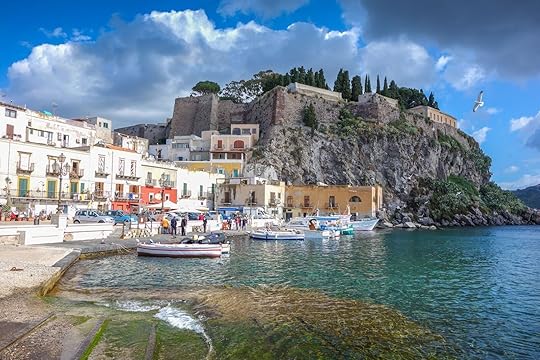
Lipari Island, Sicily. Photo: silky/Shutterstock
The Aeolian Islands, off the northeastern coast of Sicily, Italy, are an intriguing adventure travel destination for 2025. The volcanic, seven-island archipelago has plenty of unique hiking opportunities where visitors can see volcanic action firsthand, as well as no shortage of beaches, sailing trips, dive sites, snorkeling tours, and plenty more for travelers who like spending time outdoors. As you may expect from the landscape, there are also gorgeous black sand beaches and several thermal springs. Some of the more unique activities on the islands include public mud baths, opportunities to night-hike Mount Stromboli, and snorkeling over underwater fumaroles.
The Aeolian Islands Preservation Fund helps ensure tourism is both managed and benefits the natural environment, and the lack of air service helps keep crowds low. The islands see usually around 200,000 tourists per year, compared to the 15 million arrivals to Sicily in 2023. From Sicily, you’ll need to take a ferry from Milazzo, Messina, or Palermo; the trip is between one and four hours, depending on where you’re going. From the mainland, you can take a ferry from Naples. The quickest trip is about five hours, via the SNAV high-speed ferry.
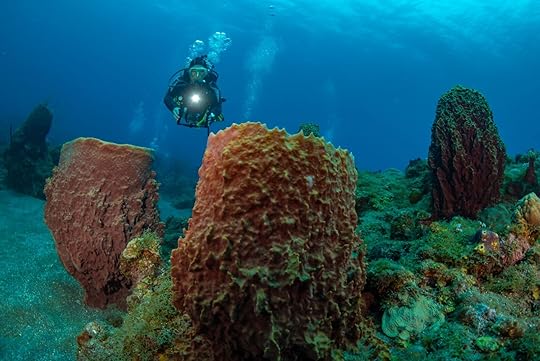
A diver on a Saba reef. Photo: timsimages.uk/Shutterstock
The volcanic island Saba is just five square miles and has one of the scariest (but totally safe) airports in the world (though it’s also accessible by ferry from St. Maarten). It’s sometimes called “The Unspoiled Queen” as it’s still quite undeveloped, owing partially to the difficulties of building on such a steep and small island. The island is world-famous for exceptional year-round scuba diving, as well as high-elevation hiking through various landscapes around the Mount Scenery trail network.
While the island does have luxury resorts, they’re not your usual all-inclusives. There are no large chain hotels or resorts like those found in more commercial tourist destinations in the Caribbean. It also has plenty of cottage-style accommodations set on cliff sides and in gardens, giving the island a wilder, more natural feel that’s getting harder and harder to find as tourism economies grow in the region.

Boats on Phewa Lake, Pokhara, Nepal. Photo: FS11/Shutterstock
Pokhara is definitely one of the best adventure travel destinations of 2025 — at least if you ask the country of Nepal, as it officially designated the city as the country’s tourism capital in March 2024. The city sits close to the Annapurna Range, making it a hub for hiking and climbing tours, as well as a popular place to stay before or after starting the famous Annapurna Circuit Trek. Paragliding is also popular, as is “ultralight flying” in small, open-air planes. Both allow visitors to experience the famous mountain range without the need for a multi-week hike. There are also opportunities for spelunking, mountain biking, and even visiting with monks or learning traditional skills from local Indigenous groups, for people not interested in trekking.
Pokhara is accessible via a quick flight to the brand new Pokhara International Airport, or on the daily tourist bus from from Kathmandu. There are several new hotels that just opened or are opening soon, including the luxury lakeside Glacier Hotel Pokhara, the family-run Blue Planet Lodge, and the mountain-view New Hotel Elia. Lodging is extremely affordable, and mid-range rooms can usually be found between $20 and $30 per night. The Nepalese government is currently investing in infrastructure to make travel easier and more accessible in the area, and the new Shanti Banbatika Botanical Garden, complete with meditation areas and an herbal garden, is also underway.
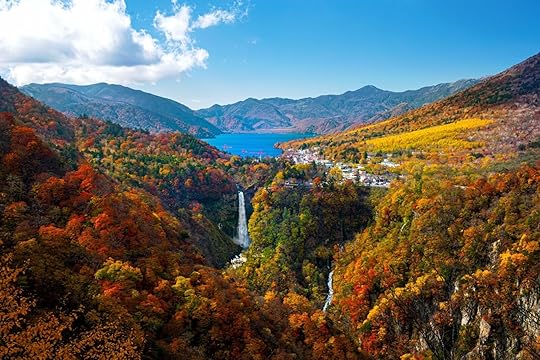
Autumn views from the Akechidaira Observatory, Lake Chuzenji, Nikko, Japan. Photo: Taweep Tang/Shutterstock
Nikko is a natural and cultural draw that has managed to preserve its ancient character, despite being one of Japan’s most significant historical sites. The town serves as a gateway to Nikko National Park, where dramatic volcanic landscapes are a wilderness playground for guests who don’t mind exploring on foot. The area is famous for its historic Toshogu Shrine complex, but venture beyond that, and you’ll find a year’s worth of mountain hiking trails trails, thundering waterfalls, and steaming hot springs.
The region’s extensive trail network winds through old-growth forests and past ancient shrines, while Lake Chuzenji, formed 20,000 years ago by volcanic activity, is a stunning place for kayaking and lakeside walks. And in Nikko, it’s easy to combine adventure activities, whether you want to hike to hot springs or kayak between beaches for a point-to-point outdoor trip.
You won’t find large international hotel chains in Nikko. Instead, it’s mostly historic ryokans and boutique hotels tucked away in the mountains. Many are family run and have been for generations, offering a taste of old-school Japanese hospitality that can be increasingly difficult to find in more touristed areas. Though Nikko is just two hours by bullet train from Tokyo, making it doable as a day trip, it feels worlds apart — and far less crowded.

A small boat in the Blue Lagoon, Tarapoto, Peru. Photo: SPHOTODR/Shutterstock
Tarapoto, Peru, is an interesting contender among nominees for the best adventure travel destinations of 2025, with a blend of natural beauty, cultural richness, and diverse activities. It’s in Peru’s northern jungles and is the unofficial gateway to the high Amazon region. It sits at the foot of the Cordillera Escalera, a natural conservation area teeming with dense tropical forests and impressive waterfalls. That makes it appealing for birdwatchers and anyone keen on staying in eco-lodges among the trees. Rappelling and canyoneering tours are also growing in popularity.
In addition to exploring the conservation area, visitors can go rafting and canoeing on the Mayo and Huallaga rivers, or hike to sites like Ahuashiyacu Falls or Palestine Cave. Tarapota is also big into cocoa cultivation and farming, creating lots of opportunities to tour farms and even learn traditional chocolate making skills. 
The Best Adventure Travel Destinations for 2025: the Places That Didn’t Win

Every year, Matador Network awards destinations around the world in our annual travel awards, highlighting both our editor and travel professional’s picks, and a host of awards selected by our readers. The Reader’s Choice Awards ask Matador‘s 900,000-plus social media and email followers to vote on some of the biggest accolades of the year, including the “Next Big Destination” of 2025, the best airline, and the best wellness, sustainability, and adventure travel destinations.
For all of our awards, nominations are gathered from Matador’s team of editors, videographers, content managers, and travel pros. The list is then narrowed down based on a points system before being shared with readers. The votes are then tallied, and the winner gets the top slot. However, Matador staff are only a tiny fraction of people who travel, so we always leave space for readers to write in suggestions of the places they feel deserve national attention.

Chiang Mai, Thailand, scored several write-in votes from readers. Photo: Take photos/Shutterstock
And our readers did not disappoint. In 2024’s survey, readers wrote in nearly 100 alternate suggestions for the best adventure travel destinations of 2025. Some destinations received multiple write-in votes, like the tiny Caribbean island of Saba, Chang Mai in northern Thailand, and the entirety of Costa Rica.
While none of the write-in picks of the best adventure travel destinations garnered enough votes to win — that honor went to Ecuador’s Galápagos Islands — our editors did enjoy looking through the picks and learning what destinations our readers are most interested in.
Here are some of the picks of the best adventure travel destinations suggested by Matador Network readers that didn’t make the cut — but did inspire us to start planning next year’s travel.

Lipari Island, Sicily. Photo: silky/Shutterstock
The Aeolian Islands, off the northeastern coast of Sicily, Italy, are an intriguing adventure travel destination for 2025. The volcanic, seven-island archipelago has plenty of unique hiking opportunities where visitors can see volcanic action firsthand, as well as no shortage of beaches, sailing trips, dive sites, snorkeling tours, and plenty more for travelers who like spending time outdoors. As you may expect from the landscape, there are also gorgeous black sand beaches and several thermal springs. Some of the more unique activities on the islands include public mud baths, opportunities to night-hike Mount Stromboli, and snorkeling over underwater fumaroles.
The Aeolian Islands Preservation Fund helps ensure tourism is both managed and benefits the natural environment, and the lack of air service helps keep crowds low. The islands see usually around 200,000 tourists per year, compared to the 15 million arrivals to Sicily in 2023. From Sicily, you’ll need to take a ferry from Milazzo, Messina, or Palermo; the trip is between one and four hours, depending on where you’re going. From the mainland, you can take a ferry from Naples. The quickest trip is about five hours, via the SNAV high-speed ferry.

A diver on a Saba reef. Photo: timsimages.uk/Shutterstock
The volcanic island Saba is just five square miles and has one of the scariest (but totally safe) airports in the world (though it’s also accessible by ferry from St. Maarten). It’s sometimes called “The Unspoiled Queen” as it’s still quite undeveloped, owing partially to the difficulties of building on such a steep and small island. The island is world-famous for exceptional year-round scuba diving, as well as high-elevation hiking through various landscapes around the Mount Scenery trail network.
While the island does have luxury resorts, they’re not your usual all-inclusives. There are no large chain hotels or resorts like those found in more commercial tourist destinations in the Caribbean. It also has plenty of cottage-style accommodations set on cliff sides and in gardens, giving the island a wilder, more natural feel that’s getting harder and harder to find as tourism economies grow in the region.

Boats on Phewa Lake, Pokhara, Nepal. Photo: FS11/Shutterstock
Pokhara is definitely one of the best adventure travel destinations of 2025 — at least if you ask the country of Nepal, as it officially designated the city as the country’s tourism capital in March 2024. The city sits close to the Annapurna Range, making it a hub for hiking and climbing tours, as well as a popular place to stay before or after starting the famous Annapurna Circuit Trek. Paragliding is also popular, as is “ultralight flying” in small, open-air planes. Both allow visitors to experience the famous mountain range without the need for a multi-week hike. There are also opportunities for spelunking, mountain biking, and even visiting with monks or learning traditional skills from local Indigenous groups, for people not interested in trekking.
Pokhara is accessible via a quick flight to the brand new Pokhara International Airport, or on the daily tourist bus from from Kathmandu. There are several new hotels that just opened or are opening soon, including the luxury lakeside Glacier Hotel Pokhara, the family-run Blue Planet Lodge, and the mountain-view New Hotel Elia. Lodging is extremely affordable, and mid-range rooms can usually be found between $20 and $30 per night. The Nepalese government is currently investing in infrastructure to make travel easier and more accessible in the area, and the new Shanti Banbatika Botanical Garden, complete with meditation areas and an herbal garden, is also underway.

Autumn views from the Akechidaira Observatory, Lake Chuzenji, Nikko, Japan. Photo: Taweep Tang/Shutterstock
Nikko is a natural and cultural draw that has managed to preserve its ancient character, despite being one of Japan’s most significant historical sites. The town serves as a gateway to Nikko National Park, where dramatic volcanic landscapes are a wilderness playground for guests who don’t mind exploring on foot. The area is famous for its historic Toshogu Shrine complex, but venture beyond that, and you’ll find a year’s worth of mountain hiking trails trails, thundering waterfalls, and steaming hot springs.
The region’s extensive trail network winds through old-growth forests and past ancient shrines, while Lake Chuzenji, formed 20,000 years ago by volcanic activity, is a stunning place for kayaking and lakeside walks. And in Nikko, it’s easy to combine adventure activities, whether you want to hike to hot springs or kayak between beaches for a point-to-point outdoor trip.
You won’t find large international hotel chains in Nikko. Instead, it’s mostly historic ryokans and boutique hotels tucked away in the mountains. Many are family run and have been for generations, offering a taste of old-school Japanese hospitality that can be increasingly difficult to find in more touristed areas. Though Nikko is just two hours by bullet train from Tokyo, making it doable as a day trip, it feels worlds apart — and far less crowded.

A small boat in the Blue Lagoon, Tarapoto, Peru. Photo: SPHOTODR/Shutterstock
Tarapoto, Peru, is an interesting contender among nominees for the best adventure travel destinations of 2025, with a blend of natural beauty, cultural richness, and diverse activities. It’s in Peru’s northern jungles and is the unofficial gateway to the high Amazon region. It sits at the foot of the Cordillera Escalera, a natural conservation area teeming with dense tropical forests and impressive waterfalls. That makes it appealing for birdwatchers and anyone keen on staying in eco-lodges among the trees. Rappelling and canyoneering tours are also growing in popularity.
In addition to exploring the conservation area, visitors can go rafting and canoeing on the Mayo and Huallaga rivers, or hike to sites like Ahuashiyacu Falls or Palestine Cave. Tarapota is also big into cocoa cultivation and farming, creating lots of opportunities to tour farms and even learn traditional chocolate making skills. 
You’ll Be Paid $1,000 if You Miss Your Cruise Ship After These Shore Excursions

Cruise travelers wanting to make the most of the little time they are allotted on land don’t have to book shore excursions. You won’t miss out if you decide to explore a destination on your own, especially if you have a solid walking tour to follow. But if you do want to visit a destination via a guided tour, know that there’s more out there than the excursions proposed by your cruise line.
While there are multiple independent tour operators that offer a huge variety of visits (some as unique as VIP tours of the Vatican), very few are specifically tailored to cruise travelers’ schedule. Cruisers have two major constraints when on land: They can only spend a few hours on site, and they have a strict all-aboard time that they need to keep if they don’t want to miss the ship.
A solution for cruisers who don’t find excursions to their taste or budget via their cruise line, and can’t find an independent tour that fits their tight schedule, is to look at the offerings available via Shore Excursions Group.
Shore Excursions Group offers cruise travelers more than 4,000 tours in 300-plus destinations around the world, from Alaska to the Arabian Gulf, all with the promise of getting back to the ship on time for departure.
“Since 2008, we’ve delivered over 4.6 million excursions with a 99.99 percent reliability rate,” says Paul Kiritsky, CEO of Shore Excursions Group, in an email conversation. And if that wasn’t enough, the company also has a ‘Back to Ship’ guarantee that covers cruisers. “Our team will arrange and pay for accommodations, meals, and transportation to the next port of call and pay each impacted guest $1,000 — ensuring you travel worry-free,” he continues.
And it’s not the only promise that Shore Excursions Group makes to cruisers, it also guarantees the cheapest excursions out there.
“We guarantee that our prices are the lowest you can find. If you find a lower price for a tour we offer, we will match it,” the company’s website says. This guarantee applies to the prices your cruise line offers, of course.
Shore Excursions Group’s website is one that’s incredibly easy to use for cruisers. Enter the details of your upcoming sailing, including the cruise line, the name of the ship, and the dates of the cruise, and all the shore excursion options for all the ports you’ll be visiting during your trip will be displayed in a matter of seconds.

Photo: Morgane Croissant
In the spring, I’ll travel on board Holland America’s Zuiderdam around the Mediterranean. To know what’s available to me via Shore Excursions Group, I entered my details and was provided with all the possible tours, including pre-cruise ones, for all the port days. A quick scan of my options showed me that, among other excursions on offer, there’s a stress-free guided visit of the Colosseum — a tour that’s not even proposed by the cruise line — and it won’t be crowded: Shore Excursions Group only offers small-group tours, with no more than 12 people.
 Photo: Morgane Croissant
Photo: Morgane Croissant Photo: Morgane Croissant
Photo: Morgane CroissantTo learn more about the Cruise Excursions Group’s offerings, the company’s best-selling tours, and what makes it unique among excursion providers, we talked with the company’s CEO, Paul Kiritsky.
This interview has been edited for length and clarity.
Matador: Does Shore Excursions Group pick up cruisers at the ship just like a traditional shore excursion?Kiritsky: Yes, our excursions are designed for convenience, with trusted tour operators meeting guests directly at the ship. While we provide the seamless experience expected from traditional excursions, our smaller groups and personalized itineraries add a touch of adventure and quality.
If a cruise ship has to cancel a day on shore at a specific port at the last minute, can the cruisers who booked an excursion with Shore Excursions Group get a refund?Shore Excursions Group fully refunds canceled excursions, including those affected by last-minute port changes or ship delays. This ensures a smooth travel experience for our guests.
In what cruising region do people use Shore Excursions Group the most?We use proprietary itinerary technology on our website in collaboration with local tour experts to ensure that our excursions are available for all cruisers, especially along the most popular sailings in regions like the Caribbean, Alaska, and Europe. So, our most popular offerings align with the most frequented cruise destinations, allowing cruisers to enjoy our higher-quality excursions wherever they sail around the world.
What are the top five excursions that cruisers book with Shore Excursions Group?Our top five most-booked excursions include snorkeling in the Caribbean reefs, trekking glaciers in Alaska, exploring ancient ruins in Italy and Greece, savoring wines in Italy, and unique cultural tours in Japan.
What is the best-rated excursion currently offered by Shore Excursions Group?Our Alaska whale-watching and glacier tours are guest favorites, consistently praised for breathtaking views and wildlife encounters. From Juneau’s port, you can escape the masses on a boat that holds a maximum of 40 guests with a guarantee of seeing whales AND take a float trip on spectacular, glacier-studded Mendenhall Lake, passing by the world-famous 2.5 mile-wide Mendenhall Glacier. Other highly rated options include historic tours across Europe in destinations like Rome and Mykonos, and the Chacchoben Mayan Ruins in Costa Maya.
Does Shore Excursions Group offer unique excursions that cruise lines cannot offer?Absolutely. Our team has over 100 years of cruise and travel industry expertise, and they work diligently to curate a unique portfolio of higher-quality and more personalized excursions than the cruise lines. Some of our unique offerings include exclusive tours such as the Best of Rome, Pompeii and Amalfi Coast, Aix En Provence and Marseille, guided culinary tours in Japan, and private excursions offered in many ports, including river cruising destinations. In addition, we offer incredible multi-port packages featuring top-rated and one-of-a-kind excursions in each port, hand-selected by our team. 
This Island Resort Offers Secluded Serenity Near the ‘Narrowest Place on Earth’
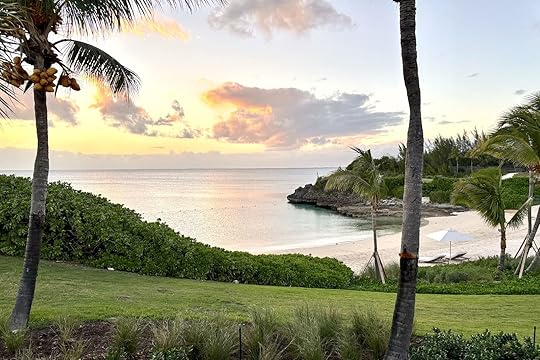
Fifty miles east of Nassau, the capital of the Bahamas that locals refer to simply as “the city,” lies Eleuthera, a slim island 110 miles long and under 1 mile wide at parts. Only about about 11,000 people live on the stretch of land that gets its name from the Greek word for freedom.
Arriving on the island via a 40-minute flight from Miami gave me a taste of what was to come. North Eleuthera Airport is the smallest airport I’ve ever encountered, possessing only a few narrow rooms inside. The security area is the size of a hallway, and the customs area is the size of a bathroom with a line that stretches outside. Eleuthera is not a year-round tourism hub like Nassau while still being accessible for travelers from the United States, and that’s precisely its charm.
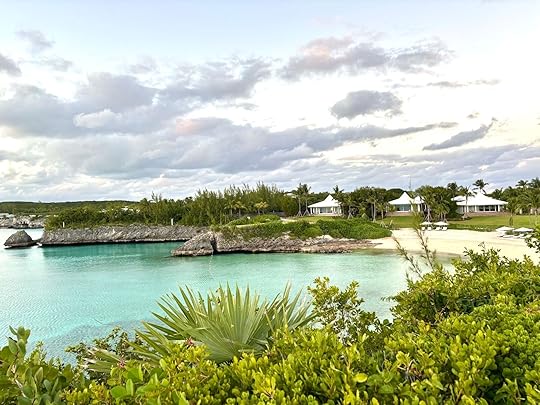
View of the villas at The Cove on Eleuthera. Photo: Keven Gungor
The Cove, a 25-minute drive away from the airport, shares this sense of isolation among paradise. The recently renovated resort has just under 30 units, keeping the area consistently tranquil. The Caribbean is a popular getaway for people based in South Florida like me. The pristine beaches and culture are a couple of hours by plane away, and I’ve been to more islands than I can count. Still, I’ve never had an experience quite like the one on Eleuthera, where The Cove offers a novel respite. The property and island are ideal for visitors who want to visit the Caribbean without staying in revolving door resorts or being limited to overcrowded cruise ports.
We hope you love the stays we recommend! Just so you know, Matador may collect a small commission from the links on this page if you decide to book a stay. Listed prices are accurate as of the time of publication.
Book NowRooms at The Cove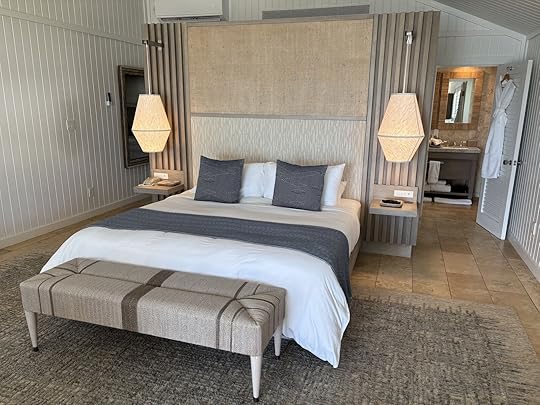 King suite at The Cove. Photo: Keven Gungor
King suite at The Cove. Photo: Keven Gungor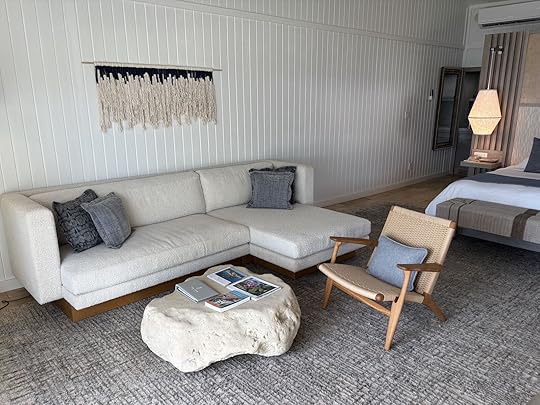 Photo: Keven Gungor
Photo: Keven Gungor Photo: Keven Gungor
Photo: Keven GungorGuests can choose between junior or king suites (between $1,500 to $2,000 per night), or larger villas (between $4,000 and $6,000 per night). Sporting a king bed, the suites are best for solo travelers or couples, while the beachfront villas are intended for families or groups of friends up to six guests. Most of these stand-alone bungalows are beachfront, with a delightful view of the Caribbean azure from bed.
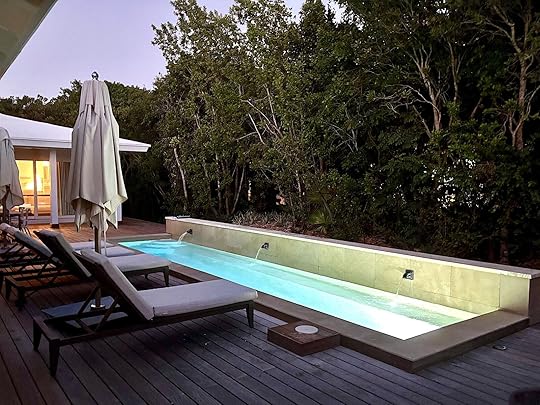
Private pool at one of the villas at The Cove. Photo: Keven Gungor
The 750-to-950-square-foot suites include perks like private patios and soaking tubs, while 1,100-3,500-square-foot villas offer a spacious living area, outdoor showers, and a few even have private heated pools. The bathrooms inside make you feel like you’re in a chic spa with mosaic tiles, rain showerheads, and plush robes and slippers.
Things to do at The Cove and on Eleuthera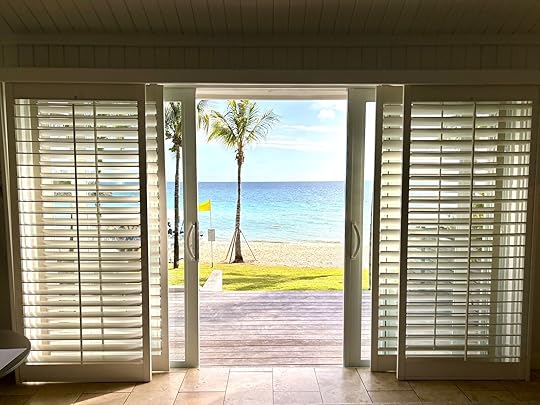
View from the king suite patio. Photo: Keven Gungor
The majority of the bungalows at The Cove have beachfront patios so you can stroll right out of bed to walk on white sands or take a dip in the turquoise Caribbean waters. Snorkeling equipment is conveniently left on deck to allow guests to explore tropical life underwater as they please. If you’re lucky, you’ll spot turtles among an array of sea stars and colorful fish.
Committed to sustainability efforts, The Cove has partnered with the Reef Rescue Network to support coral restoration in the region. Guests can learn more about this initiative through a guided snorkel tour at the property. A portion of revenues is donated straight to the RRN to fund these restoration efforts.
View this post on InstagramA post shared by Reef Rescue Network (@reefrescuenetwork)
If you’re sunburnt and need a chill session out of the sun, the resort has you covered at the spa and fitness center. Spa treatments include body wraps, massages, and body scrubs. A few doors down, you can join a yoga session to start your morning fresh or to finish your day with the sunset behind you.
The property offers complimentary activities like kayaking and paddleboarding to keep you busy on the water. Or embrace the beach bum lifestyle on floating hammocks can can be rented for $150 an hour.
View this post on InstagramA post shared by The Cove Eleuthera (@thecove_eleuthera)
For guests seeking more adventure, The Cove’s concierges can coordinate off-site activities like deep sea fishing ($1,300 to $1,800), horseback riding ($100), and private snorkeling tours ($80).

Photos: Keven Gungor
The water is a clear draw that brings many people to the region, but my personal favorite part of my recent visit was exploring Eleuthera on land during a tour set up by The Cove. It was one part natural adventure and one part history of the island with stops at places like Preacher’s Cave, where passengers took refuge in 1648 after a shipwreck. Human history here dates back centuries earlier to the Indigenous Lucayan people who inhabited what is now the Bahamas and Turks and Caicos. Glass Window Bridge was another highlight on the guided tour. The eerie spot is on the Bight of Eleuthera, which separates the chaotic deep blue seas of the Atlantic Ocean from the calm and clear Caribbean waters on the other side. It’s referred to as the narrowest place on Earth, and is indeed at least the narrowest point on the island.
Where to eat and drink at The CoveView this post on InstagramA post shared by The Cove Eleuthera (@thecove_eleuthera)
Atop a hill between the property’s two sand coves lies an infinity pool with a killer view. Behind this pool, guests can enjoy an outdoor brunch at Gregory Town Grill, or catch sunset cocktails at the open-air Point Bar and dine indoors at Freedom Restaurant. The latter includes an intimate 5-seat sushi bar experience and other delicious Asian-inspired seafood plates. For groups seeking an intimate meal, the property can prepare a private dinner right on the beach.
How to get to Eleuthera and The Cove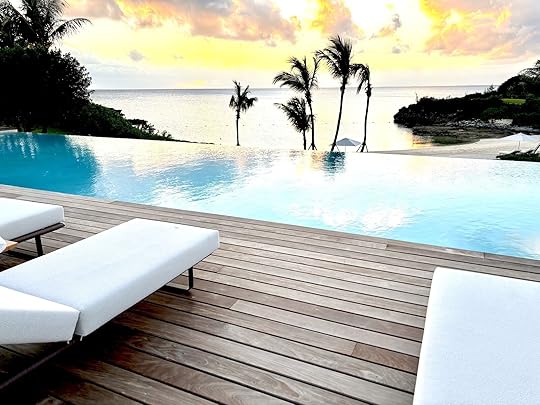
Photo: Keven Gungor
Eleuthera’s two local airports (North Eleuthera and Governor’s Harbour) are served by daily direct flights from Miami, Fort Lauderdale, and Atlanta. Visitors can also fly in from Nassau if they wish to stop at multiple islands in the Bahamas. Once there, car services and taxis can be arranged through the hotel. 
The Steepest Cable Car in the World Just Opened at a Swiss Ski Resort
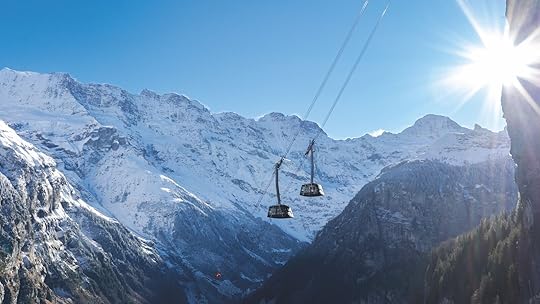
In Switzerland, a ski resort just unveiled something completely new in time for winter European ski trips: the opening of the steepest cable car in the world. It has a gradient of 159.4 percent, making it the steepest of its kind (though it hasn’t yet been officially acknowledged by Guinness World Records).
On December 14, 2024, Switzerland unveiled the engineering marvel. It connects Stechelberg (a small village in a valley in the Bernese Alps) to Mürren, a car-free village and base area for the Mürren-Schilthorn ski area. The cable car gains 2,542 feet (775 meters) of elevation over a distance of 3,017 feet, or 1,194 meters. The short trip takes just four minutes, and each of the two cars can hold 85 people — meaning it can carry 800 people up every hour. The cable car is totally autonomous, operating without any staff on board.
Currently, Norway’s Loen Skylift holds the record for the world’s steepest cable car, with a maximum gradient of 60 percent. But if the developers of the new project are correct, that’ll change as soon as the Guinness World Records team confirms the Swiss cable car’s superlative.
View this post on InstagramA post shared by Schilthorn – Piz Gloria (@schilthorn_pizgloria)
The cable car is part of a larger “SCHILTHORNBAHN 20XX” project, designed to make it easier and quicker to reach the Schilthorn Summit, 6,670 feet above the town of Stechelberg. The Stechelberg-Mürren cable car is one of two that opened on the same day, though the middle leg of the trip (from Mürren to Birg) is far less steep. However, it does operate at extremely high elevations, and uses unique technology to ensure it’s stable and smooth, even in extremely high wind.
It’s referred to as a “funifor” (a portmanteau of “funicular” and “funivia;” the latter means “cableway” in Italian) and is made up of two entirely separate systems, so one cable car can be stopped while the other one runs. Each has two ropes, or cables: one to keep it on a straight, tight track, and the other that rotates to move the cabins. That makes it far more stable than systems in which the cars hang from just one moving cable.
One of two lines between Mürren and Birg is finished, with the other expected by November 2025. The final segment of the Swiss cable car project (between Birg and Schilthorn Summit) will begin operations in March 2025, and be fully completed by spring 2026. Prior to the project, the trip from Stechelberg to the summit took 32 minutes and involved three connections; now, only two connections are required, and the total travel time will be 22 minutes. The new technology also allows the cars to operate in extremely windy, snowy, and intense conditions, meaning closures due to winter storms will likely be a thing of the past.
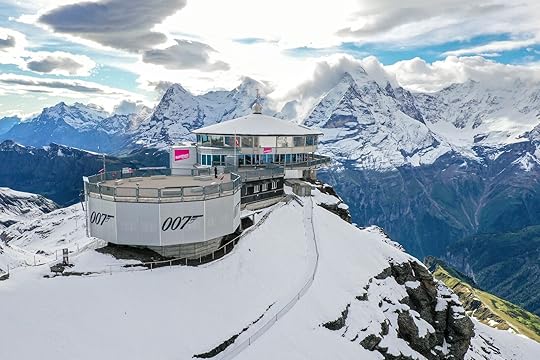
Photo: Schlithorn Piz Gloria/Marco Zurschmiede
One of its most famous draws at the summit is the Piz Gloria, a revolving restaurant that became famous as the primary filming location for the 1969 James Bond film On Her Majesty’s Secret Service. The restaurant rotates 360 degrees, allowing visitors to enjoy unparalleled views of the Swiss Alps, including famous peaks like Eiger, Mönch, and Jungfrau, and even Mont Blanc, on a clear day. The summit also houses Bond World 007, an interactive exhibit dedicated to the film, showcasing props, memorabilia, and visuals of iconic scenes. There’s also the “007 Walk of Fame,” where actors and crew involved in the film have left their handprints and signatures, including James Bond himself (actor George Lazenby).
Guests who don’t want to go all the way to the summit can also stop at Birg, the second station, and check out the Thrill Walk. It’s a free suspended walkway with a glass floor and crawl-through open tunnel, offering views of the mountains from hundreds of feet above the ground. It’s worth exploring if you’re keen to see the views but aren’t ready to take on the region’s more active via ferrata climb.
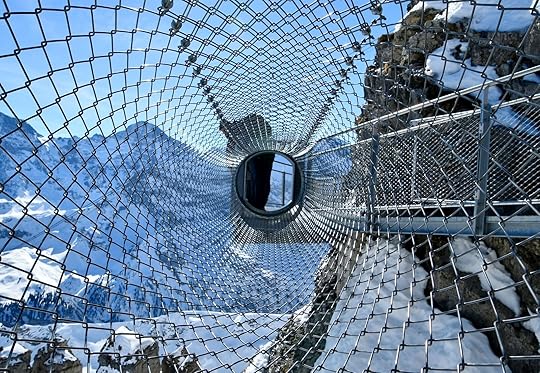
The walk/crawl-through tunnel at the Thrill Walk in Birg. Photo: Jungfrau Region Tourism
In the winter, skiing is the big draw, and the Mürren-Schilthorn winter sports area has about 30 miles (50 km) of trails. There’s only one trail off the Schilthorn Summit, however. It’s a an expert route called “the Inferno,” and is the starting point for the longest downhill ski race in the world, held every January. It’s part of the Jungfrau Ski Region program, and ski lift tickets (including the new Swiss cable cars) start around 79 euros (about $80) per day for adults. Tickets for other transportation throughout the Jungfrau region for activities like sightseeing, hiking, or Mario Kart-style racing are generally more affordable, starting at 19 euros. 
December 24, 2024
After a Decade of Trying, I Found the Best Laptop Sleeve for Remote Workers

As a travel editor, I travel quite a lot. It’s a nice perk of the job. But that also means I’m almost always working while traveling, so I always carry my laptop with me. Often, I’ll carry my laptop with me to hotel bars to get in an hour or two of work during happy hour, and I’m used to sitting sideways in airplane seats to use my computer while my fellow travelers are zonked out on a redeye flight. If I have more than half an hour or so available on the road, I’ll usually try to take advantage of it by getting a little work done.
Because of this, I’ve used lots of laptop cases and laptop sleeves. After all, laptops are expensive, and the last thing I want to do is break or damage my computer in the middle of a lengthy trip. I hadn’t yet found one I liked very much, so for the last year or so, I was using a bulky egg-carton style case off Amazon. It wasn’t anything special, but it offered tons of protection.
But recently, I realized I didn’t need extra protection for my laptop — I needed portability. These days, every travel backpack out there has a padded laptop pocket, so having a laptop case with extra padding was overkill, just adding bulk to my bag.

I have my laptop with me no matter where in the world I am. Photo: Suzie Dundas
Enter the Matador Equipment (no relation) Laptop Base Layer. It’s a lightweight, extremely waterproof laptop sleeve that has eliminated bulk in my bag, made it easier to carry my laptop on the go, and even reduced how many laptop accessories I have to carry. It answers the question of how to carry my laptop on occasions when I don’t want to use my giant carry-on backpack, like when I’m sightseeing, walking around a new city, or hanging out with friends at a hotel pool. I can easily throw it in the tiny packable backpack I carry with me for occasions like those (also from Matador Equipment, incidentally).
After a month of testing through multiple airports, cities, and countries, the Laptop Base Layer has become my favorite laptop sleeve. Here’s why, and why it could be a smart upgrade for any remote workers or digital nomads.
We hope you love the gear we recommend! Just so you know, Matador may collect a small commission from the links on this page if you decide to make a purchase. However, we only recommend gear we’ve reviewed and use ourselves. Listed prices are accurate as of the time of publication.

The Laptop Base Layer has a primary laptop compartment and a smaller pocket for accessories and cords. Photo: Suzie Dundas
The Matador Laptop Base Layer is a laptop case (also called laptop sleeve), with a main pocket for your laptop, plus a smaller zippered pocket for laptop accessories. It fits quite a bit, and I used the small pocket for the laptop charging cube and cord (replacing the separate case I used to carry for the cord to prevent it from getting tangled), as well as a USB adapter, backup phone charger, and a few extra random cords. The handle on the case felt extremely secure, even when I pulled and tugged on it. It holds all my laptop stuff, so I can carry just one thing when walking around with laptop, rather than having to shove the charger and cords and other things I may need into my jacket or random backpack pockets.
Buy Now: $60You probably don’t need a padded laptop case
My bulky and unnecessarily padded old case on top of the slimmer Laptop Base Layer. Photo: Suzie Dundas
The Laptop Base Layer is a thin-ish laptop sleeve, not a bulky foam pad that’s going to fill your backpack. For me, it’s ideal. While traveling with my carry-on backpack, I put my laptop directly into the bag’s padded laptop sleeve, and just toss the Laptop Base Layer somewhere else in my carry-on or checked bag. Once I’ve arrived, I use the Laptop Base Layer to carry my laptop when I don’t feel like using my giant carry-on backpack. It’s easy to carry in a smaller daypack around town, throwing in a beach bag for trips to the the hotel pool, or even carrying to conferences and media events, when I have to attend those. The flap has an adjustable tightness, so it can snuggly fit laptops from 13 to about 15.5 inches with no space to rattle around.
The Laptop Base Layer does have closed-cell PE foam padding to defend against bumps and scratches, which is plenty if you accidentally bump it on an airport terminal chair or it slides off the bed onto the floor. But it’s still not intended to be a crash-proof case. It also weighs next to nothing, making it an extensive upgrade over many of the thicker travel laptop cases I’ve tested in the past.
The pocket is also really helpful. I used to carry a small square-shaped case to hold my laptop charging cube and cord to prevent them from getting tangled loose in my bag. But the Laptop Base Layer pocket holds them securely, and I’ve started using the pocket as my tech pouch, rather than carrying an extra organizer.
Buy Now: $60It’s the most waterproof laptop case I’ve ever tested I'm not suggesting you leave your laptop outside in the snow -- but if you do, it'll probably be okay. Photo: Suzie Dundas
I'm not suggesting you leave your laptop outside in the snow -- but if you do, it'll probably be okay. Photo: Suzie Dundas Water mostly beads off the outer layer, and the small amount that got absorbed didn't make it inside. After 30 minutes in fairly heavy snow, everything inside was dry as can be. Photo: Suzie Dundas
Water mostly beads off the outer layer, and the small amount that got absorbed didn't make it inside. After 30 minutes in fairly heavy snow, everything inside was dry as can be. Photo: Suzie DundasThe laptop case has two methods for closing it, both of which offer waterproof protection. The fabric is nylon with a waterproof coating, which keeps moisture from seeping in. Mostly, it just rolls or beads off the the top. So your laptop and anything in the inner pocket will stay dry if you get caught in a downpour or are carrying it in snowy and wet conditions.
I mostly used the “fast-access mode,” simply sliding my laptop in the sleeve and flapping closed the Velcro top. But there’s a second method I recommend using when outdoors to protect your laptop from rain, dust, or snow: roll the top closed (like a dry bag), then fold the velcro top down over that. That method of closing has an IPX6 waterproof rating, meaning you can spray it with water from a close distance and everything inside will stay bone dry. Keep in mind that only works for the actual laptop, but the pocket on the front for smaller items isn’t waterproof.

You can close it by rolling the waterproof flap (left) or just by folding the Velcro panel (right). (By the way, this is the same product, but drastically different lighting conditions). Photo: Suzie Dundas
That means you can carry this on ski trips, to the beach, in heavy rain and snow, or even on a tiny boat where it’s likely to get heavily splashed, if you were so inclined. I don’t normally test products in a “worst-case scenario” — for example, I wouldn’t intentionally crash my mountain bike to see if a helmet works — but in this case, I did. I put my MacBook in the Laptop Base Layer, rolled the flap, and sprayed the showerhead on it. The outside of the sleeve absorbed a tiny bit of water, but everything on the inside (including my laptop) is totally dry.
Buy Now: $60The price and warranty
Photo: Suzie Dundas
The Laptop Base Layer is $60. Admittedly, it’s more than my chunky egg carton-style case I was using, but it’s in line with comparable products like the Bellroy Laptop Caddy ($79), the Pelican Adventurer Case ($50), the Thule Subterra MacBook Sleeve ($50), or Native Union laptop sleeves ($50). More luxury products like the Monos Laptop Sleeve are quite a bit pricier, if a bit more stylish. And considering the cost to repair a laptop from water damage (and the income lost from not having a laptop for a week or more), $60 is a pretty good deal, especially for people who regularly travel with their laptops. The Laptop Base Layer comes with a three-year warranty, but seems like it would last a lot longer that.
If you’re at all like me, you’re probably paying more attention every day to the products you buy and how they’re impacting the planet. Matador Equipment is big into sustainability, and has a lifetime repair program, regardless of whether your item is still under warranty. It’s not free, but it means you can get your gear repaired if it breaks even if you’ve had it for years and years (as I hope to).
Buy Now: $60The downsides
The handle makes it really easy to carry, even with just one finger while my hands are full with things like boarding passes, coffee mugs, or other bags. Photo: Suzie Dundas
I’ve been a big fan of this case and already carried it through more than a few scenarios that allowed for quality testing. I left it outside during a rainy season storm in Kenya (not on purpose), carried it on bumpy game drives on safaris, have thrown it in my gym bag, and used it through six airports and several flights, including a redeye flight in which I left it on the floor under the seat in front of me (again, by accident), and my water bottle slowly dripped onto it for at least an hour or two. It’s performed extremely well.
I’ve noticed only two minor annoyances: the Velcro collects quite a bit of fuzz and dog hair, and it only comes in one color. I personally couldn’t care less about the aesthetics, but it’s definitely designed for functionality above all. Also note that it isn’t hugely padded. As I mentioned, that’s a plus for me, but I wouldn’t want to smack it against rock faces or drop it from any kind of height. It’s a travel-friendly laptop sleeve, not drop-proof case. For that, you’ll need something much bulkier, like this chunky plastic case from Amazon. 
Matador Network's Blog
- Matador Network's profile
- 6 followers



